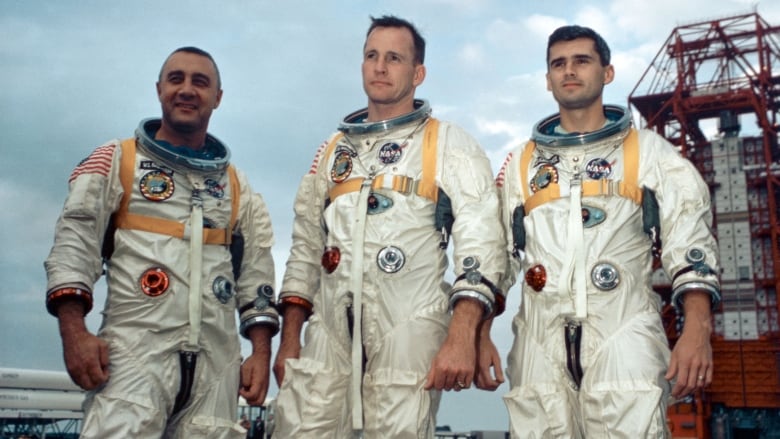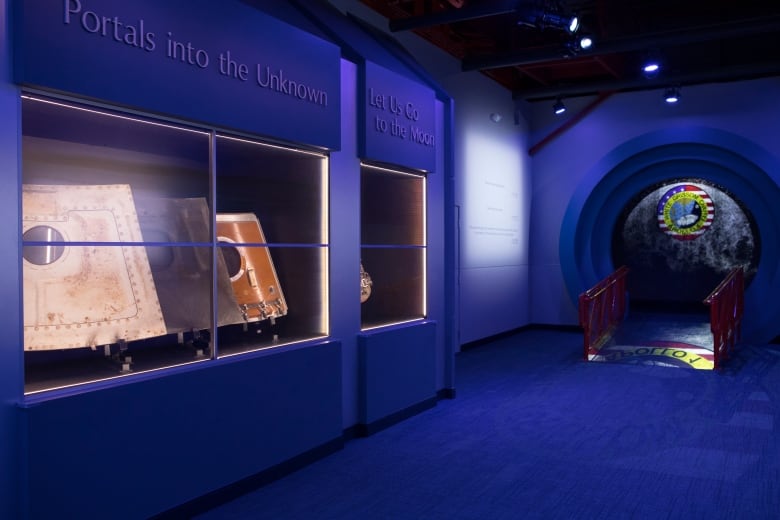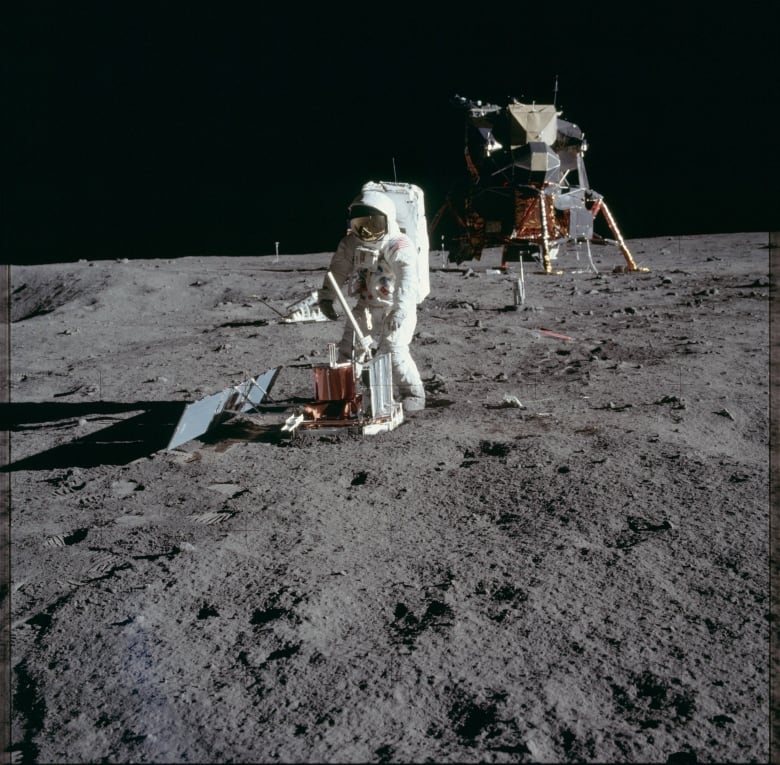Hatch that trapped astronauts in deadly fire on display: Bob McDonald
50 years after the deaths of 3 astronauts, NASA reflects on what it learned in the tragedy

On January 27, 1967, a flash fire broke out inside the Apollo 1 Command Module during a launch pad test at Cape Canaveral Florida. Ed White, Gus Grissom and Roger Chaffee were killed when they were unable to open the hatch. Now, for the first time, the scorched three-section hatch, along with other artifacts from the astronauts lives, are on display at the Kennedy Space Center to mark the 50th anniversary of the event.
The Apollo 1 fire was the first human spaceflight accident in the U.S. to involve the loss of a crew, and was a wakeup call for NASA, which was under tremendous pressure to land a man on the moon before the end of the decade as the late president Kennedy had requested. The task was enormous; to develop a brand new spacecraft, lunar lander, and giant booster rocket, all completely from scratch.
- NASA releases thousands of photos from Apollo moon missions
- NASA celebrates 45th anniversary of first moon landing
Any new technology involves mistakes in the early stages, both technological mistakes and errors in judgment. The fundamental flaws in the Apollo 1 capsule were a 100 per centoxygen environment, flammable materials, and a hatch that opened inwards. A spark from a wire bundle triggered the fire, which spread instantly, almost explosively, increasing pressure inside the capsule making it impossible for the crew to pull the hatch inwards to escape. The whole tragedy was over in less than a minute, as the intense heat and pressure blew through the side of the spacecraft.
Accident put race to moon on hold
The three deaths put the entire Apollo moon race on hold, as engineers redesigned the capsules to make them safer, including a hatch that swung outwards and could be opened by the crew in five seconds. (A re-designed hatch is also part of the display.) But it was also a time to look at management decisions to push ahead when the technology was not yet ready for flight. In fact, GusGrissomhadhung a lemon on the Apollo Mission Simulator to express his frustration.

Following the accident, the capsule was taken to the Langley Research Center in Virginia, where it was torn apart to find the cause of the fire. Following the investigation, the capsule was put into storage completely out of sight because no one wanted to have anything to do with it. This is the first time actual pieces of that spacecraft have been put on public display. The original hatch was actually three hatches on top of one another, showing how difficult it was to open in an emergency.
It is remarkable how the scientists and engineers were able to rally following the accident and pull off a moon landing only two and a half years later. And while safety was a priority, they still took tremendous risks. When Neil Armstrong and Buzz Aldrin set the lunar module Eagle down on the Sea of Tranquility, they had only 12 seconds of fuel to spare.
More space accidents
Of course, the Apollo 1 fire was not the only accident that claimed the lives of astronauts. On Jan.28, 1986, 31 years ago this weekend, the Space Shuttle Challenger exploded during launch because an O-ring seal failed on one of the rocket boosters. The manufacturer warned that the seals would not be effective in cold temperatures, but the decision was made to launch that morning even though the temperature was below freezing, because the whole shuttle program was behind schedule.

In 2003, Space Shuttle Columbia disintegrated on the way back from space because of a hole that was punched in a wing by a piece of foam that had fallen off the enormous fuel tank during launch. Foam had been seen falling off tanks on earlier flights, but it was considered a non-issue because foam is lightweight material. How could a piece of foam bring down a billion-dollar spaceship?
But it did.
Lessons from Apollo 1
From tragedy comes new knowledge and new ways of doing things. Lessons from Apollo 1 enabled 12 humans to walk on the moon. Despite the Challenger and Columbia disasters, space shuttles flew 135 times over 30 years, delivering satellites to orbit, carrying 833 people to space, and building the International Space Station.
Despite the lessons learned, spaceflight is still a risky business.Last year a Falcon 9 unmanned rocket, built by private company Space X, blew up on the launch pad because of a faulty fuelling system.
And in 2014, Virgin Galactic Enterprise, Spaceship Two, a space tourism vehicle, crashed on a test flight due to pilot error, killing one of the crew.
All this is to say that getting to space is hard. It pushes vehicles and people to their limits, sometimes beyond. The best we can do is learn from the mistakes, and honour those who lost their lives because of them.












_(720p).jpg)


 OFFICIAL HD MUSIC VIDEO.jpg)
.jpg)



























































































